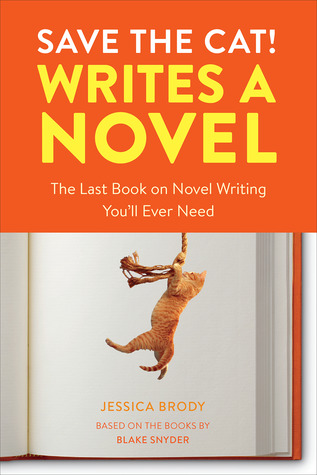The tagline of NaNoWriMo is “50’000 words in 30 days”.
It’s a quantity over quality challenge, but even if you don’t care how bad what you write is, you still need to have a theme or story you can keep writing about.
I’ve tried all sorts of topics
In 2010, I “won” NaNo. I finished the 50’000 words in the 30 days. It was a collection of short stories and letters to people (real or fictitious). Completely disconnected from each other, no theme, no recurring characters…
In 2014, I decided to write about 30 life lessons. I made it to 13’500 words before a shoulder injury prevented me from even sitting properly for two weeks. That sucked. It had been going rather well. But it wasn’t a single story.
In 2017 and 2018, I wrote by hand in notebooks, and developed actual stories… one was a London-based murder mystery, and the other an attempt at a consultancy-based sci-fi adventure. Both stalled through lack of direction and things happening at around 30’000 words.
In 2019, I tried to write a random story and ended up making a sort of journal of my current life… which bored even me and stalled after a dozen pages. Also work got in the way, as it usually does.
And then 2020 reared its ugly head with a Pandemic that has us all cowering in our houses and apartments, and I realised that I wouldn’t have to deal with a commute or lugging a notebook, laptop, or anything at all. I could write at my desk every morning or night or whenever my writing time was. (I wrote 80% of those 50’000 words between 21:00 and 01:00. Turns out I’m more of a night writer.)
Pad out the room where your insecurity hides
Also, for the first time since 2002 (my first NaNo), I remembered that November was coming up when it was still September. So I had over a month to read up on writing, and try to plan, and think of characters, settings, and scenes.
I read a book on plotting murder mysteries, where I discovered the idea of sub-plots or perhaps “side stories” and how they float up into the main story and progress alongside it. For murder mysteries, they typically also tie into the ending somehow.
I looked for videos that could teach me things, and discovered Katietastic’s 3-act, 9-sections, 27-chapters plotting framework. (Read the blog post: https://byomentor.com/2019/05/20/the-3-act-9-block-27-chapter-method/ or watch the video https://www.youtube.com/watch?v=fe3eodLF_Uo.
I even found and followed Neil Gaiman’s Masterclass on Storytelling https://www.masterclass.com/classes/neil-gaiman-teaches-the-art-of-storytelling. It was lovely. But he specialises in short stories, which I cannot be bothered to read… I like longer books. So it was a bit harder, weirdly, to act on the lessons.

I bought and skimmed through Save the Cat writes a novel, and the idea of the 15 beats for a plot (Goodreads link https://www.goodreads.com/book/show/32805475-save-the-cat-writes-a-novel) I tried using the 15 beats and the 27 chapters to plot a story, but I couldn’t get myself interested in it. And without having spent any time with the characters, I had no idea what they might do.

I don’t know if I learned things that I used, but spending the time to learn them did comfort me. It made the approaching mountain feel less like a monster and more like something I wasn’t terrified of starting to climb.
I already know that when something feels terrifying, the hardest thing to do is to start it. The hardest step to take is the first. After, you have a chance of getting into a rhythm, of feeling like it is more and more possible. To have a moment when you turn around or look down and realise how far you’ve already come! But that can be impossible to see before you start.
Aim for Draft Zero
All I wanted this year, was to work on a story. ANY STORY. As long as the same set of characters kept having one more thing happen to them or drove the action to a new place, I would be satisfied. I did not give one fig on whether this was a good story or a deep character.
Stephen King and Terry Pratchett (both seat-of-your-pants writers as opposed to planners) talk about a “draft zero” where you tell yourself the story. That’s all I was aiming for. One awful draft zero retelling to myself of a messed up incongruous story.
Seriously, don’t Edit, just Draft
Aiming for a draft zero helped me not judge my writing, and kept me on the “so what do they do next?” As opposed to moving into editing mode (deadly for NaNo) to titivate words I’d only just written. (Been there, done that… on the years I didn’t win, mainly)
At some point I did some googling about the writing process and discovered it has steps… Five of them… Prewriting (Brainstorming), Drafting (this is what I was doing), Revising (where you check for missing pieces and useless bits), Editing (where you get the words and sentences to flow now that you have all the right pieces), and Publishing.
If you attempt NaNo, focus on Brainstorming in October (with planning / outlining if you’re a planner), and use November to draft. If you catch yourself wanting to Revise or Edit, slap your fingers, leave yourself a note (perhaps with a handy symbol to search for later) and go back to drafting.
If you want to get to 50’000 words and have a bit of life left over, just draft.
Keep moving forward
My most challenging uphill was from 28’000 words to 41’000 words. And if you noticed, I had fallen over two other years at the 30’000 mark due to lack of direction and action.
This year, I kept moving the things forward… but it felt empty, directionless.
After some light googling (nobody’s a saint), I realised that I lacked tension. I tried to build it in, maybe managed for a scene or two, and messed it up again. I need to learn about tension. That’s ok. This is practice.
You need trees
What I did discover though, is that if I gave myself a place to go “at some later point”, I would slowly see my characters do random things I’d never really thought of before writing them down, that eventually end them up there.
Sir Terry Pratchett talks about a story like a valley full of mist. “I certainly don’t sit down and plan a book out before I write it. There’s a phrase I use called “The Valley Full of Clouds.” Writing a novel is as if you are going off on a journey across a valley. The valley is full of mist, but you can see the top of a tree here and the top of another tree over there. And with any luck you can see the other side of the valley. But you cannot see down into the mist. Nevertheless, you head for the first tree.”
Whenever I ended up stuck – and I only realised this after trying to get unstuck by writing 10’000 words that remained very much stuck in place… – it was because I had arrived at this “tree” in my story, and didn’t have a next “tree” or “mountain” to aim for!
When I gave myself trees, the story moved forward. So the next time I am going to write something bigger, I am going to spot my trees first.
Final impression
I have no idea if what I wrote even makes sense. At one point I wrote myself into such a corner that the character found herself waking up from a dream… And it doesn’t matter.
My aim was to see if I could keep characters moving forward. Yes, I can. To see if can stay diligent and fit 50’000 words into 30 days. Yes, I can.
I managed it by choosing a topic: a story with a young character in a setting I myself wanted to escape to.
I managed it by reading up on what writing was like, to make myself feel more able to take that first step without feeling too lost or overwhelmed.
I managed it by aiming for draft zero, or telling myself the story and no more. Just drafting, no editing.
I managed it by always moving forward. Even when it felt ridiculous, I made them do a thing. Anything. One foot in front of the other.
I managed it by looking for the next tree, and using that to aim the characters in a certain direction.
So while I don’t know precisely what is going to happen next, I will be writing more, and aiming for the trees.

